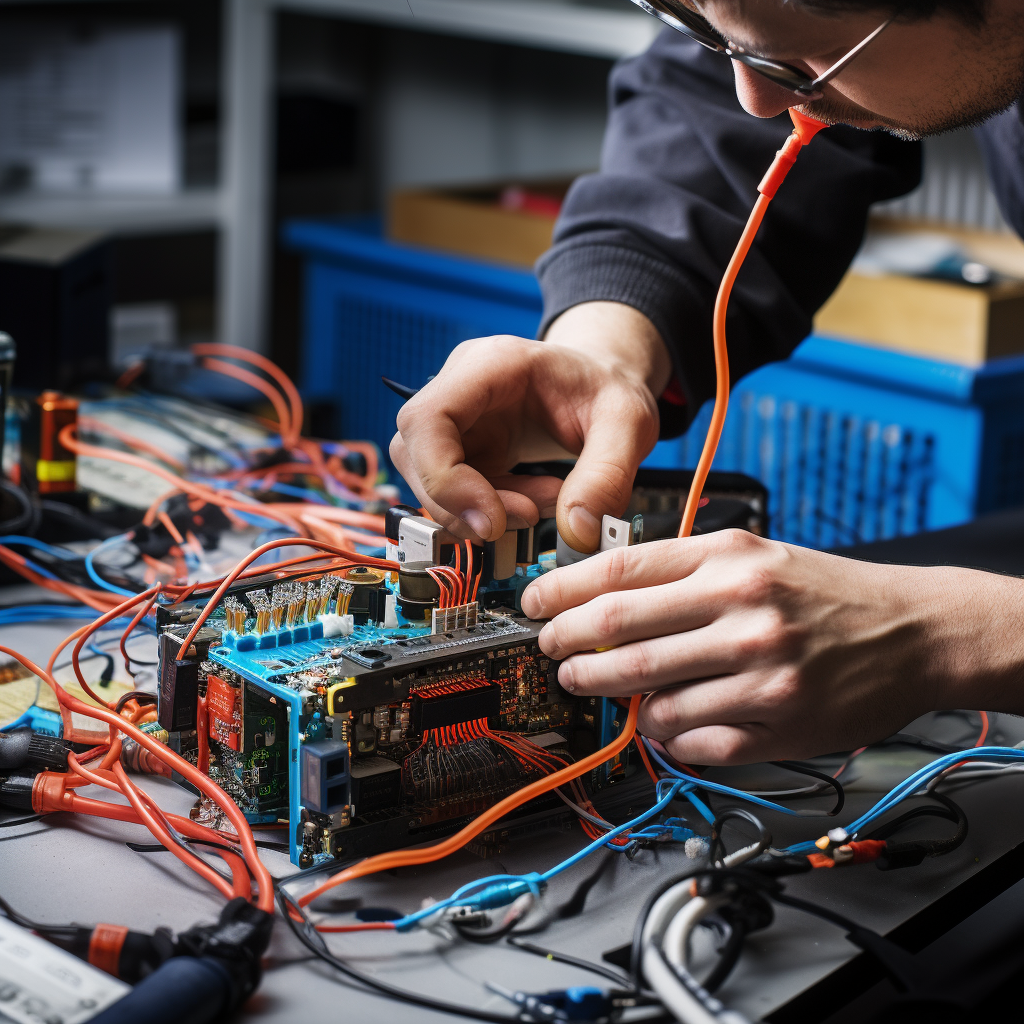Introduction
Wire harness assembly is a critical process in the manufacturing of electronic and electrical systems, serving as the backbone for transmitting signals and power across various components. This comprehensive guide will walk you through the step-by-step process of wire harness assembly, from design and prototyping to production and quality control. Understanding this process is crucial for professionals in electronics, automotive, aerospace, and related industries to ensure the creation of reliable and efficient wire harness systems.
1. Design and Engineering
Conceptualization
- Initial Planning: Understanding the application requirements, including electrical, mechanical, and environmental specifications.
- Schematic Creation: Developing a detailed wiring diagram or schematic to outline the circuitry and connections.
Component Selection
- Choosing Wires and Cables: Based on current capacity, voltage requirements, and environmental factors.
- Connector and Terminal Selection: Selecting appropriate connectors and terminals that match the application’s needs.
CAD Modeling
- Creating a Digital Prototype: Using CAD (Computer-Aided Design) software to model the wire harness in 3D, which aids in visualizing and adjusting the design.
2. Prototyping
Building a Prototype
- Assembly of a Sample Harness: Constructing a prototype to test the design’s functionality and fit.
- Testing and Revisions: Conducting electrical and mechanical tests to validate the design, making necessary revisions based on the results.
3. Pre-Production Preparation
Material Procurement
- Sourcing Components: Ordering wires, connectors, terminals, and other materials as per the final design.
- Quality Check of Materials: Inspecting received materials for defects and compliance with specifications.
Tooling and Setup
- Preparing Tools and Equipment: Setting up cutting, stripping, crimping, and other necessary tools.
- Workstation Setup: Organizing the production area for efficient workflow.
4. Wire Cutting and Stripping
Cutting
- Measuring and Cutting Wires: Using automatic wire-cutting machines to cut wires to precise lengths as per the design.
Stripping
- Removing Insulation: Stripping the ends of the wires to expose the conductive material for connections.
5. Wire Termination and Connector Assembly
Crimping
- Attaching Terminals: Crimping terminals onto the ends of the wires for secure and conductive connections.
Connector Assembly
- Inserting Wires into Connectors: Assembling connectors by inserting the terminated wires in the designated positions.
6. Assembling the Wire Harness
Laying Out Wires
- Following the Schematic: Arranging the wires according to the design layout.
Bundling
- Securing Wires Together: Using cable ties, tapes, or sleeving to bundle wires into a single, manageable harness.
7. Electrical Testing
Continuity and Functionality Checks
- Testing for Electrical Integrity: Using testing equipment to ensure each wire correctly connects and functions as intended.
Insulation and Resistance Testing
- Ensuring Safety Standards: Checking for insulation integrity and appropriate resistance levels.
8. Final Assembly and Labeling
Securing Components
- Finalizing the Assembly: Securing any loose components, ensuring that the harness is compact and robust.
Labeling
- Applying Identifications: Adding labels or markings for easy installation and maintenance.
9. Quality Control and Inspection
Visual Inspection
- Manual Checking: Examining the wire harness for any physical defects or deviations from the design.
Automated Inspection
- Using Advanced Equipment: Employing automated inspection systems for a more thorough and efficient quality check.
10. Packaging and Dispatch
Safe Packaging
- Protection During Transit: Packing the harnesses in a way that prevents damage during transportation.
Dispatch
- Shipping to the Client: Ensuring timely delivery to the client or the next stage of production.
Conclusion
The process of wire harness assembly is intricate and requires meticulous attention to detail at every stage, from design to dispatch. Each step is crucial in ensuring the final product meets the required specifications and performs reliably in its intended application. As technologies advance, the wire harness assembly process continues to evolve, incorporating new tools, materials, and techniques to enhance efficiency and quality.
For manufacturers like WiringLabs, mastering the wire harness assembly process is essential. It not only ensures the production of high-quality and reliable wire harnesses but also solidifies their reputation as a leader in the field. Whether for a simple consumer device or a complex aerospace system, the excellence in wire harness assembly plays a pivotal role in the functionality and success of the end product.
If you need custom wiring harness or cable assemblies, feel free to contact WiringLabs.

